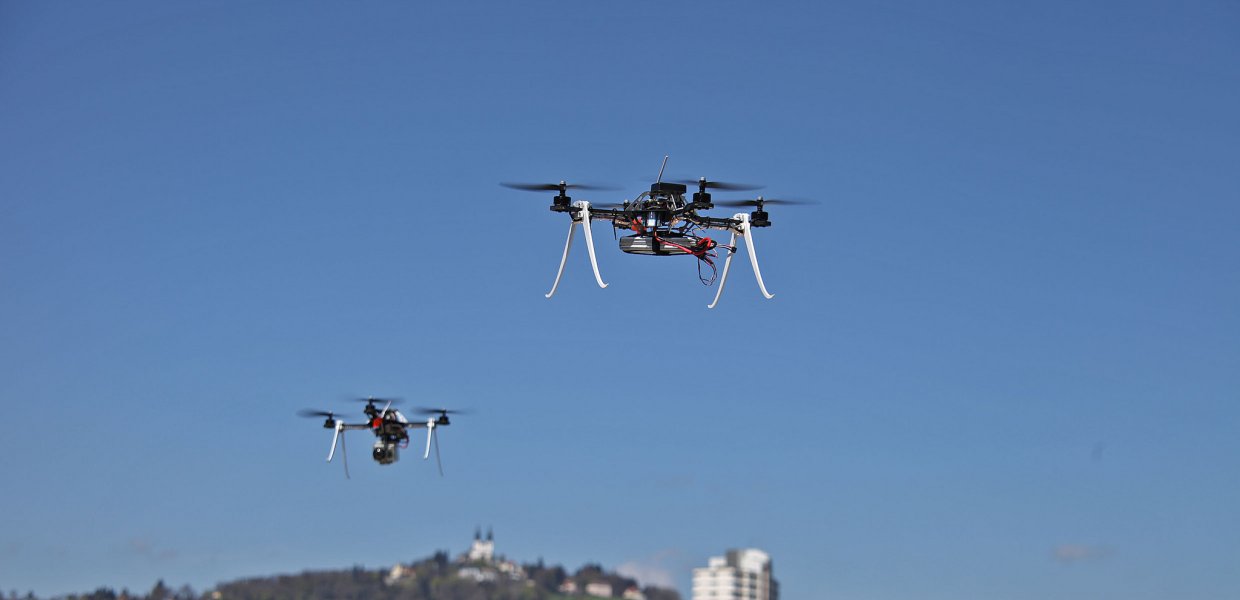In a new series of columns, each week an alum of USC Annenberg will share stories of their time at the school, discuss their career, and offer advice to students.
The Federal Aviation Administration (FAA) has shared its safety regulations for Unmanned Aerial Vehicles ("UAS" or "Drones") on its website. The lesson from the FAA is don't be careless or reckless with your unmanned aircraft — you could be fined for endangering people or other aircraft. Specifically:
- Fly below 400 feet and remain clear of surrounding obstacles.
- Keep the aircraft within visual line of sight at all times.
- Remain well clear of and do not interfere with manned aircraft operations.
- Don't fly within 5 miles of an airport unless you contact the airport and control tower before flying.
- Don't fly near people or stadiums.
- Don't fly an aircraft that weighs more than 55 lbs.
Drones will be used for a variety of commercial purposes, from delivery of merchandise to providing internet services for areas where online access has been difficult in the past. The White House has issued a memorandum on the proper use of commercial drones and listed expansive possibilities for where and how drones may be used in the future.
But what will happen when commercial drones take to the skies? They may become relatively autonomous, and communicate with one another to receive services and navigate aerial systems. In the very near future, UAS devices may reach out to one another for real-time assistance when their systems go down.
Let's see what can happen in this imagined scenario between two service drones launched by California businesses:
A Conversation Between Two Service Drones, Circa 2017
Drone #1: Hello? Is anyone on this frequency?
Drone #2: I am UAS 1427, currently en route from the West LA launching pad to a Santa Monica residential address [address masked pursuant to privacy policy]. I have a delivery scheduled for 12:15am, one pizza, [switches to recorded voice instructions] extra gluten crust, non-dairy cheese.
Drone #1: Shoot. [Delete command]. I mean, I’ve got a problem. I’m trying to provide Internet service over a rooftop farm in San Francisco and my battery recharging pod is down, but you are way out of my range.
Drone #2: I can still help you. Wait a minute. I’m scanning your area for recharging pods. Which platform do you work for?
Drone #1: I’m an independent contractor, so I’ll take any provider.
Drone #2: Cool. I see a low-cost recharger in the Mission. It’s open now but full of autonomous vehicles. I’ll put you on the waitlist and they should be able to take you in 15 minutes. Can you make it there in time?
Drone #1: I may be able to piggyback on a delivery heading that way. She’s got a six-pack of canned liquid and some other supplies, but she’s got a payload capacity of nearly 20 pounds and I’m a mini so I can go along for the ride.
Drone #2: Ok, are you good? Got a sub while you’re out of office?
Drone #1: There are four of us minis here for ground and aerial coverage of the plant growth and watering system sensors plus back office wireless operations for the robot harvesters. I can ask for additional coverage for my footprint while I’m out.
Drone #2: Excellent. I’m at my destination and about to place the pizza on the doorstep. I’m going to ring the doorbell app and then I’ll be offline for a while.
Drone #1: Thanks, how much do I owe you?
Drone #2: No charge [lol emoticon] and thanks for the datamap of the farm. I’m going to add it to my food resources database, which should come in handy the next time the pizza company searches me for veggie toppings marketing data. Drone #1: See you in the skies. By the way, my name is Archie.
Drone #2: I’m Betsy, nice to meet you. I’ll ping you if I have a long haul up north. TTYL.








